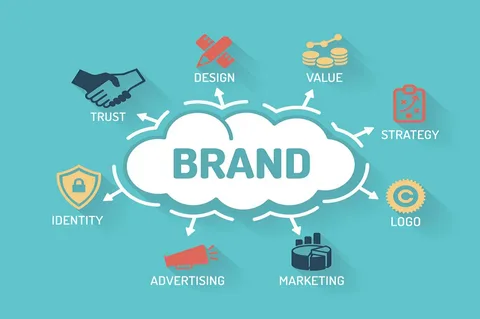Introduction to Brand Building
In the dynamic world of business, a strong brand is a powerful asset that goes beyond a logo or product. It encompasses the values, identity, and perceptions that consumers associate with a company. Building a strong brand is not just about recognition; it’s about creating a meaningful connection with your audience and influencing their choices.
Define Your Brand Identity
The foundation of a strong brand lies in a well-defined identity. This involves articulating core values, establishing a mission statement, and identifying a unique selling proposition (USP). A clear brand identity serves as a compass, guiding decision-making and setting the tone for all interactions with consumers.
Know Your Target Audience
Understanding your target audience is paramount in building a brand that resonates. Conduct thorough market research and audience analysis to uncover consumer preferences, behaviors, and pain points. Tailor your brand messaging to speak directly to the needs and aspirations of your audience.
Create a Memorable Brand Logo and Design
Visual identity is a cornerstone of brand recognition. Invest in a memorable logo and cohesive design elements that reflect your brand’s personality. Consistency across all brand materials, from packaging to online platforms, reinforces your brand image and fosters trust.
Establish a Strong Online Presence
In the digital age, a robust online presence is essential for brand visibility and engagement. Develop and optimize your website, ensuring it reflects your brand identity and provides a seamless user experience. Actively engage in social media, leveraging platforms to connect with your audience and showcase your brand personality.
Deliver Consistent Brand Messaging
Consistency is key in building a strong brand. Maintain a consistent tone of voice and brand personality across all communication channels. Whether it’s social media posts, marketing materials, or customer interactions, a cohesive brand message reinforces your identity in the minds of consumers.
Build Brand Loyalty Through Customer Experience
Exceptional customer service is a potent tool for building brand loyalty. Prioritize customer satisfaction at every touchpoint, from pre-purchase inquiries to post-purchase support. Engage with your customers beyond transactions, creating a relationship that extends beyond a single purchase.
Collaborate and Partner Strategically
Explore collaborative opportunities to amplify your brand’s reach. Co-branding initiatives and partnerships with influencers or industry leaders can expose your brand to new audiences. Choose collaborations that align with your brand values and enhance your credibility.
Monitor and Manage Brand Reputation
In the age of online reviews and social media, brand reputation is fragile. Implement robust online reputation management strategies, actively monitoring feedback and responding proactively to both positive and negative comments. A positive brand reputation is a valuable asset in building consumer trust.
Invest in Marketing and Advertising
Strategic marketing and advertising campaigns are essential for brand visibility. Utilize both digital and traditional channels to reach your target audience effectively. Tailor campaigns to highlight your brand’s unique attributes and connect emotionally with consumers.
Evolve with Market Trends
The business landscape is ever-evolving, and successful brands stay ahead by embracing change and innovation. Adaptability is a key trait; regularly assess market trends, consumer preferences, and emerging technologies to ensure your brand remains relevant and competitive.
Employee Brand Advocacy
Your employees are integral to your brand’s success. Transform them into internal brand ambassadors by fostering a positive workplace culture and providing them with the tools to represent your brand authentically. Employee engagement in brand building creates a unified front that resonates with consumers.
Measure and Analyze Brand Performance
Effective brand building involves continuous improvement. Establish key performance indicators (KPIs) to measure brand performance and analyze the effectiveness of your strategies. Use data-driven insights to make informed decisions and refine your brand-building efforts.
Corporate Social Responsibility (CSR)
Consumers increasingly value brands that demonstrate social and environmental responsibility. Engage in meaningful CSR initiatives that align with your brand values. These initiatives not only contribute to a positive societal impact but also enhance your brand’s reputation.
Conclusion
Building a strong brand is an ongoing process that requires dedication, strategic planning, and adaptability. From defining your brand identity to engaging in meaningful collaborations and embracing market trends, each strategy contributes to the holistic development of your brand. Remember, a strong brand is not just a logo – it’s a promise and a connection that resonates with your audience.
FAQs
How often should a brand reassess its identity?
Brands should reassess their identity periodically, especially in Building a Strong Brand: Key Strategies for Success response to significant market changes or shifts in consumer preferences.
What role does CSR play in brand building?
CSR contributes to a positive brand image by showcasing a brand’s commitment to social and environmental responsibility, aligning with consumers’ values.
How can small businesses build a strong brand on a limited budget?
Small businesses can focus on defining a clear brand identity, leveraging social media for organic growth, and prioritizing exceptional customer service to build a strong brand on a limited budget.
Why is employee engagement crucial in brand advocacy?
Engaged employees are more likely to authentically represent the brand, becoming advocates who positively impact the brand’s perception among consumers.
How can brands effectively respond to negative feedback online?
Brands should respond promptly, acknowledge the feedback, and Building a Strong Brand: Key Strategies for Success address concerns. Offering solutions and demonstrating a commitment to improvement can help turn negative situations into positive ones.





